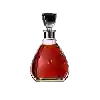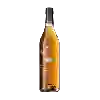
Winery Abbe RousBanyuls - 5 Ans d'Age
This wine generally goes well with beef and mature and hard cheese.
Wine flavors and olphactive analysis
On the nose the Banyuls - 5 Ans d'Age of Winery Abbe Rous in the region of Languedoc-Roussillon often reveals types of flavors of cherry, chocolate or cheese and sometimes also flavors of non oak, earth or microbio.
Food and wine pairings with Banyuls - 5 Ans d'Age
Pairings that work perfectly with Banyuls - 5 Ans d'Age
Original food and wine pairings with Banyuls - 5 Ans d'Age
The Banyuls - 5 Ans d'Age of Winery Abbe Rous matches generally quite well with dishes of beef or mature and hard cheese such as recipes of tournedos rossini with port sauce or cheese clafoutis.
Details and technical informations about Winery Abbe Rous's Banyuls - 5 Ans d'Age.
Discover the grape variety: Aspiran
Aspiran is a grape variety whose first traces go back to Gallo-Roman times. Originally from the Languedoc region, it is not very common nowadays. It has many alternative names, including verdal, ribeyrenc and riveyrenc. The vine, which is more or less upright, has average vigor. The ripening of the second late period allows the picking of compact, winged, conical bunches of medium size. The berries are protected by a resistant, albeit thin, skin, which is distinguished by its plum-colored hue, but can also appear pink, gray or white. The flesh is delicious with its spicy and sweet taste and is rich in juice. When vinified, it gives a product with a delicate colour, slightly perfumed and fine in the mouth. Although it does not fear arid and rocky soils, Aspiran is sensitive to winter frosts.
Last vintages of this wine
The best vintages of Banyuls - 5 Ans d'Age from Winery Abbe Rous are 2011, 2010, 2006, 2005 and 2008.
Informations about the Winery Abbe Rous
The Winery Abbe Rous is one of of the world's greatest estates. It offers 50 wines for sale in the of Banyuls to come and discover on site or to buy online.
The wine region of Banyuls
Banyuls wines come from the South-eastern Part of Roussillon, in the south of France, in the lower Pyrenees, a few kilometres from the Spanish border. These naturally Sweet wines are consumed both as an aperitif and as a dessert. They come in a wide range of hues, from GoldenGreen (Banyuls Blanc) to Amber (Banyuls Ambré) to the intense garnet of the standard Banyuls Rouge. Unusually among the natural sweet wines of France, all Banyuls wines are made primarily from Grenache grapes of various colors.
The wine region of Languedoc-Roussillon
Languedoc (formerly Coteaux du Languedoc) is a key appellation used in the Languedoc-Roussillon wine region of southern France. It covers Dry table wines of all three colors (red, white and rosé) from the entire region, but leaves Sweet and Sparkling wines to other more specialized appellations. About 75% of all Languedoc wines are red, with the remaining 25% split roughly down the middle between whites and rosés. The appellation covers most of the Languedoc region and almost a third of all the vineyards in France.
The word of the wine: Pinot meunier
Cultivated in the 19th century in all the northern vineyards, this black grape variety has largely regressed since. Very present in the Marne valley, it constitutes a third of the vineyards in Champagne, alongside pinot noir and chardonnay with which it is often blended. It brings roundness and red and yellow fruit aromas to champagnes. Pinot meunier is also the dominant grape variety in red and rosé wines in the Orleans AOC and the rare Touraine-Noble-Joué, a grey wine. Syn.: meunier.














